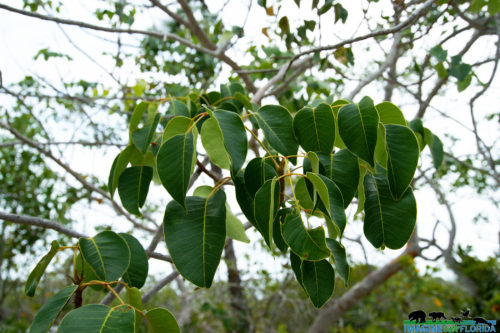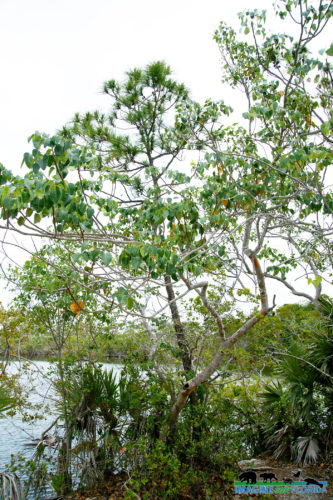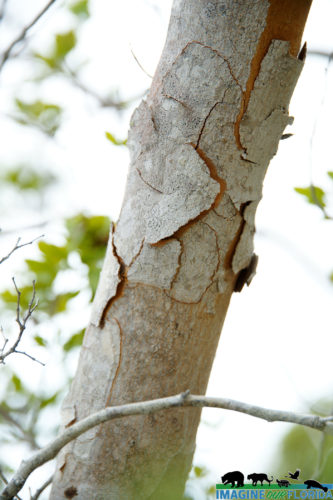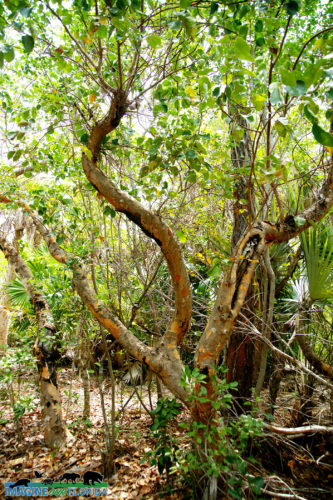The Poisonwood tree (Metopium Toxiferum) is a medium-sized (25-35 feet tall) tree that only grows in South Florida but it is also native to most of the Caribbean. The color of the bark can have more than two colors, ranging from yellows and oranges to reds and browns. However, a primary characteristic of the poisonwood tree trunk is black blotches formed by urushiol resin that has oxidized.
The flowering season occurs all year long, but its peak is during the spring season. The poisonwood grows female and male flowers on separate trees. The female flowers produce oblong orange fruits that serve as food for many types of birds including the endangered white-crowned pigeon.
Nevertheless, the poisonwood tree is part of the family of the poison oak and contains oleoresin urushiol, the same skin-irritating compound that puts the poison in poison ivy. The toxin of the poisonwood tree is so toxic that standing under its leaves during a rainy day can cause irritation and rashes on human skin.
All of us need to be capable of identifying this tree during visits to the park or when going hiking to the beautiful natural places of South Florida and the Florida Keys.




